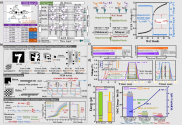it looks like he is saying that the existing 90nm ARF scanner can be used up to 65nm process. And that the new ICRD line is a 55nm process. Things that he say often contradict themselves, so I can only assume that ICRD is multi-patterning ARF dry scanner to do 55nm process.
I mean first he says that the ARF dry is for 55nm process at ICRD and it needs to be validated before mass production. Then he says ARF dry is for 90nm process and it is already mass produced with 10 U-Precision DWS supplied.
He just answered this question few minutes ago
你是魔鬼吗:啥情况,90nm光刻机是能做55nm的吗?
havok:可以。65nm和55nm用的是相同的设备,这2个节点上光刻真正能满足的是互连层,而对于小于互连层的更小尺度的线宽则需要配合光刻胶、材料、刻蚀等一些特殊的工艺手段巧妙实现
你是魔鬼吗:What's the situation, can the 90nm lithography machine do 55nm?
havok:Yes. 65nm and 55nm use the same equipment, the lithography on these two nodes can really satisfy the interconnection layer, and for the smaller-scale line width than the interconnection layer, it needs to cooperate with photoresist, material, etch and other special craft means to achieve ingeniously

